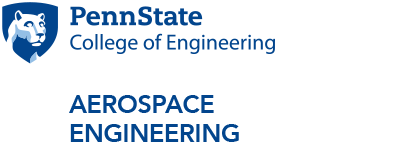
Wind Turbine Field Test Facility
The Wind Turbine Field Test Facility provides the foundation for basic wind turbine research which can contribute greatly to the small-wind industry.
Both the Whisper 500 and Skystream 3.7 systems, as configured at Penn State’s Sustainability Experience Center, are inherently capable as test platforms for small wind-electric systems. The American Wind Energy Association has identified several areas in which research is necessary to ensure future growth in the small wind industry. The industry has encouraged the U.S. Department of Energy to increase funding for small wind research and development priorities which address the following topics:
- Performance Predictions: Most states have moved towards performance-based incentives for those who install small wind-electric systems. These incentives necessitate improved tools and techniques geared towards wind resource and turbine performance assessments.
- Certification and Standards: The Small Wind Certification Council has been put into place in order to provide product certification to manufacturers. The certification process is not mandatory. Current testing practices have not been publicly compared against relevant performance prediction tools.
- Permitting Technical Assistance: Permitting remains a major barrier to widespread implementation of small wind systems. Zoning ordinances are often developed based on poor information regarding the attributes and impact of small wind. Research which would address sitting and permitting issues such as height restrictions, setbacks, sound, health impacts, wildlife impacts, property values, and visual impacts would allow for more agreeable zoning ordinances.
- Design Codes: Most of the modern wind turbine design codes may not accurately reflect small wind turbine performance or are too complicated and costly for most manufacturers to apply. Small wind industry leaders recommend that steps be taken to develop improved small wind design codes.
- Product Improvement: As the cost of solar PV declines, small wind manufacturers must improve their product designs to allow for better product reliability and economics.
- Military and Foreign Assistance Applications: There is a potential for demand in the areas of military and foreign assistance applications. The industry wants to address the technical and administrative issues preventing significant implementation of small wind systems in these areas.
- Education: Significant penetration of wind energy requires workforce development initiatives which relate to wind energy technologies.
The major purpose of the Penn State "small-wind" activity is to develop a wind turbine test facility with the capability of performing comprehensive power production and rotor aerodynamics studies on small wind-electric systems.
These systems have been instrumented with high-fidelity power and meteorological data acquisition equipment. In instances where the quantity of data is sufficient, the field test data is analyzed using an industry standard approach, whereby sampled data is averaged, distributed into bins by wind speed, and then ensemble averages of data within each bin are calculated.
Key Faculty: Dennis McLaughlin; Philip Morris; Susan Stewart
Facilities and Labs
- Adverse Environment Rotor Test Stand
- Aeroacoustics Facilities
- Air Vehicle Intelligence and Autonomy Lab
- Control and Analysis of Stochastic Systems Lab
- High-performance Computing Cluster Facility
- Indoor Flight Research Lab
- Robot Ethics and Aerial Vehicles Lab
- Rotorcraft Flight Simulator Facilities
- Sailplane Lab
- Space Propulsion Lab
- Structures Labs
- Student Space Programs Lab
- Turbomachinery Aero-Heat Transfer Lab
- Water Channel/Water Tunnel
- Wind Tunnels
- Wind Turbine Field Test Facility



